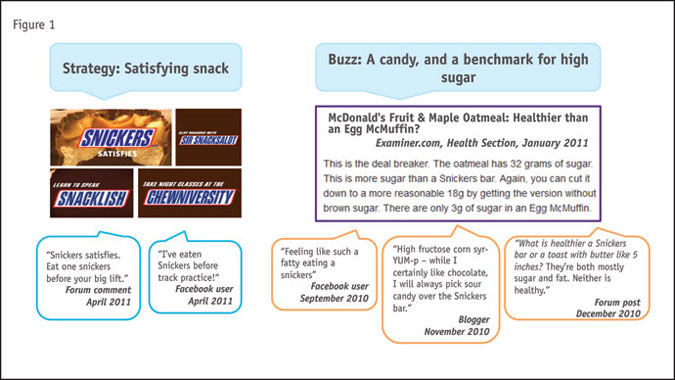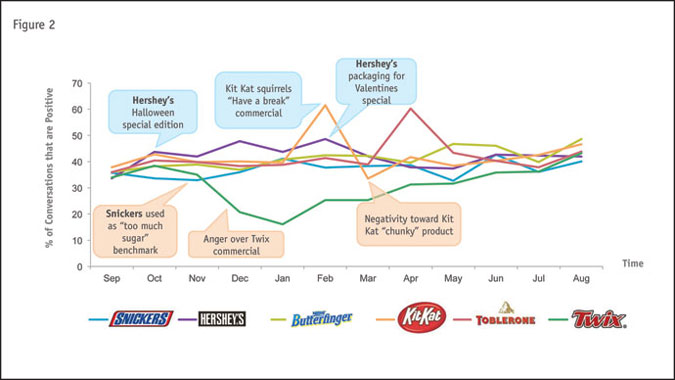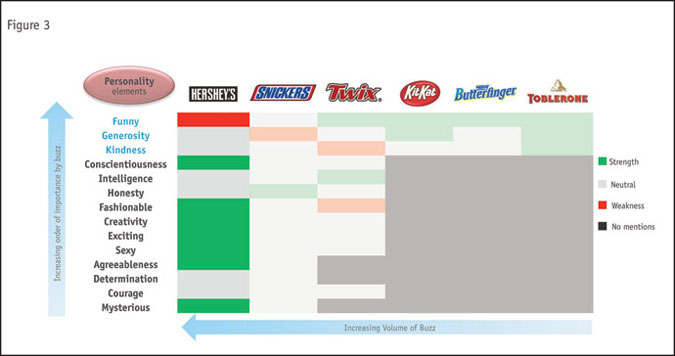Beyond listening and monitoring
Editor's note: Sourabh Sharma is the social media research expert at market research agency SKIM. He is based in New York.
One could argue that anyone with a Facebook account is engaged in a sort of informal observational, qualitative study every time they log on. Friends post recreational updates, movie reviews, political rants, life events and general musings – each of which provides a sliver of insight.
These shared insights are highly personal and unfettered, yet many are public and readily available – everything a marketing researcher or branding professional should hope for. Spontaneous conversations over the Internet provide a candid, honest and real-time view of consumer perceptions. But turning those insights into actionable strategies unleashes the true power of social media research.
A recent case study took social media research beyond listening and monitoring to uncover actionable insights from the plethora of online conversations featuring some ubiquitous chocolate brands like Hershey’s and niche brands like Toblerone. Researchers set out to learn more about the competitive landscape and perceived identity of each chocolate brand – not only how many times each brand was mentioned but the actual sentiment and passion behind the comments. The resulting insights can be used by marketers to define online engagement strategies and inspire offline marketing activities, proving there is tremendous value in digging deeper into the context and content of online conversations.
For a period of one year, these researchers compared consumer attitudes regarding chocolate brands from both the U.S. and Brazil. The approach used in this study is applicable to any consumer brand that is mentioned with sufficient frequency in social media conversations. The data-mining phase of the research study relied on text analytics and Web scraping, often in association with predefined constructs. However, what sets this research apart from traditional monitoring is the subsequent analysis and how the interpretation of the data enabled important findings to be transformed into strategies.
Any relevant, publicly available comment was captured for analysis, including Facebook posts and Likes, tweets, blogs entries and user reviews. Whereas marketers and researchers strive to uncover the most current and candid thoughts of consumers, social media makes that possible like never before. But with great power comes great responsibility: It also raises expectations among consumers that a brand will respond to undercurrents of discontentment or waning loyalty. Just imagine if New Coke had been launched in the era of social media.
Stay in sync
Assuming that brand success depends on allowing consumers to drive the development of new strategies, there is a growing need to listen more closely and stay in sync with consumer perceptions. To that end, social media listening picks up where classical research falls short. While classical research entails asking predetermined questions of targeted groups of consumers, social media research is an ideal method for gathering unfettered brand perceptions. Prompting consumers with questions (often created by brands themselves) introduces bias and inherently limits their value. Social media listening – while constrained in its ability to provide guidance and structure to conversations – can elicit more candid and possibly more authentic feedback. One is less likely to be surprised by the answer to a predetermined question than to be caught off guard by a comment overheard on Twitter.
Social media conversations are useful for understanding a brand’s consumers; their perceptions of the brand and how are they expressed online; what triggers them to speak about the brand and for deriving communication recommendations or messaging strategies.
A true measure?
One could assume that volume is indicative of brand popularity, especially in a competitive context. But is volume a true measure of loyalty and positivity? To deepen the understanding of consumers’ subconscious perceptions towards brands, it is critical to evaluate how consumers view the brands’ functional characteristics, how they connect with them emotionally and what personality the brand stands for. Such elements are trickier to deduce from traditional Q&A since respondents are less likely to speak authentically. But within social networks, deeply emotional insights can be interpreted with more certitude because they are coming from spontaneous and truthful conversations.
In order to understand and categorize the types of conversations happening around these brands, a two-by-two framework was developed to plot sentiment and passion around a collection of perceptions (taste, efficacy, value, etc.). Sentiment is the range of conversations going from less positive to more positive. Passion represents the intensity of the conversations, differentiating the like and dislike from the stronger emotions of love and hate, respectively.
Social media listening (as opposed to monitoring) enables brands to measure the positivity and strength of conversations, as well as the relative volume of conversations regarding certain brands. In this case, strength could also be described as passion. How passionately does a consumer speak about their love or contempt for a particular brand or experience? By failing to consider the strength of a statement, social media monitoring programs can miss important nuances and valuable insights.
If a brand is talked about with high positivity and high passion, it’s in a brand’s best interests to try to sustain equity among consumers. Low passion and high sentiment indicates the need for brand revitalization, perhaps a booster shot of brand excitement. Similarly, if the sentiment is low and the passion is low, a more significant brand overhaul may be in order. The most challenging brand position is that of high passion and low sentiment, as this indicates that consumers actively dislike the brand or some experience they’ve recently had in relation to the brand, such as a poorly received television commercial or failed spinoff product.
Conscious and subconscious
In evaluating consumer comments regarding chocolate brands, researchers looked at both the conscious and subconscious perceptions as they were revealed through social media research. They examined three major categories: emotional benefits (the way a brand makes you feel); personality elements (a human characteristic used to describe the brand); and functional benefits (the desired efficacy of the brand).
The combination of these sentiments drives a consumer’s preference toward a certain brand and away from others and it is interesting to see how these perceptions shape the online brand identity. Using the two-by-two framework to organize and rank social media comments based on a list of conscious and subconscious characteristics, a more nuanced perspective of the online brand identity can be uncovered. The three elements reveal what consumers seek the most from their chocolate and which brands score highest in these characteristics.
Regarded with less passion
The findings of this study showed that more talked-about brands were often regarded with less passion, while those occupying a smaller share of conversational volume were talked about with more positivity and passion.
Specifically, the research emerging from this case study showed that many of the larger, more widely-known brands are more negatively perceived regarding key elements of taste or fun – both critical factors in the enjoyment of chocolate bars. This disparity between the perceived and intended identity of a brand is crucial. For some brands, the difference is negligible; for others it nearly undermines the brand foundation. Empowered by this reality check, a brand can create and deploy strategies to close the gap and mitigate the volume of conflicting conversations.
Take the example of Snickers. Its tagline “You’re Not You When You’re Hungry” is intended to leverage the brand’s foundational brand message that Snickers is a satisfying snack. But significant social media buzz portraying Snickers as a “candy” and as a benchmark for sugar content challenges that brand strategy (Figure 1). Armed with new and valuable insight regarding brand perception, marketers can develop strategies to overcome disconnects between what brands say and what consumers feel.

Peaks of positivity
Another way to understand brand perception is to see how volume, positivity and passion vary over time. Social media monitoring is an especially powerful tool for seeing the peaks of positivity and valleys of negative sentiment overlaid to external events such as holidays and new product launches.
Large brands might leverage these opportunities to create niche, targeted communications and marketing materials that leverage a spike in seasonal and holiday sentiment (e.g., Valentine’s Day and Halloween). This not only allows them to leverage a time-based opportunity but they can further capitalize on their large conversational volume share. In fact, brands can even create a spike in positive conversations when marketers understand the drivers through this type of perspective.
For example, Hershey’s does well around Halloween and Valentine’s Day (Figure 2). Kit Kat, on the other hand, did extremely well in February, coinciding with a new advertising campaign, but bottomed-out in March when the brand launched a poorly-received chunky product. In this instance, social media provides a real-time, honest view of how brand actions immediately impact brand perception.

Make them feel happy
Taste is overwhelmingly the most important characteristic that consumers seek from their chocolate bar. This study revealed that smaller niche brands are perceived as tastier than larger brands. Similarly, the analysis validated an intuitive thought that consumers want their chocolate to make them feel happy. In this competitive landscape, the smaller Toblerone owned the happiness factor whereas other brands have opportunity for improvement.
Among U.S. consumers, “funny” is a personality trait most valued in a chocolate bar. It’s probably not surprising to most Americans that Hershey’s, with its staid packaging and established legacy, scores low on the “funny” factor but high on conscientiousness (Figure 3). Does this mean that Hershey’s should try to be funny? Or that it should leverage its legacy as the trusted, conscientious choice among chocolate bars? Empowered by new consumer insights such as these, marketers are better prepared to make those decisions.

It’s great to know truthful and current insights about your brand. A good social media research study can provide all of those. But as a marketer, these nuggets of truth are useless until something more actionable is achieved.
Unproven territory
Social media research may still feel like uncharted and unproven territory but it can and should be approached with the same expectation of value as any other research method. When social media insights are gathered using a model that ensures integrity and relevance, the results can shape strategies around sales and distribution, marketing and advertising, packaging and, of course, social media communications.
Social media research is also a powerful complement to existing data sources. Combined with sales and distribution data, for example, one might ask how the volume of conversation around a particular brand aligns with sales and distribution strategies. Or, one might explore how spikes in sentiment align with advertising messaging and channel investments.
A holistic consumer persona, developed by the consumers themselves through social media, gives marketers better intelligence from which to craft great marketing strategies. The opportunity to learn how a brand is truly regarded among consumers – whether expected or surprising, pleasing or disappointing – should always be valued. And through social media, researchers and branding professionals gain unfettered access to the bittersweet truth.
